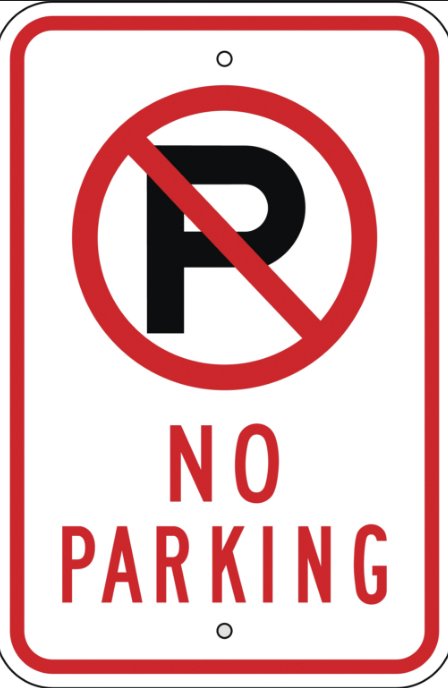No Parking & No Stopping Road Signs
What’s the difference between “no stopping” and “no parking” road signs?
No Stopping Road Signs
“No stopping” literally means, do not stop your vehicle. It’s kind of like the opposite of a stop sign. In other words, “Keep it moving.” If it helps to imagine a “Go” sign inside your mind, then go for it.
These “no stopping” signs are usually found on roads where it’s not a particularly safe spot to be stopping, such as on a bridge, near a hill or curve, or on the highway when driving through one of those “avalanche zones,” for example. Of course, you might actually have to stop there if there’s a good reason, like a traffic jam, construction, or an incident.
No Parking Road Signs
“No Parking” means, do not park the car, turn it off, take the keys out, and walk away
But, if you’re somewhere next to a “no parking” sign, you could still stop your car to load and/or unload passengers.
Check out some of our most popular articles on how to park, including:
- Parallel parking
- Reverse stall parking
- Parking on hills
- Parking in the correct gear
- How to reverse a car
- Turn signals when backing up
- Right-of-way in the parking lot
Motor Vehicle Act British Columbia on No Stopping & No Parking
BC MOTOR VEHICLE ACT
“stop” or “stand” means,
(a) when required, a complete cessation from movement, and
(b) when prohibited, the stopping or standing of a vehicle, whether occupied or not, except when necessary to avoid conflict with other traffic or to comply with the directions of a peace officer or traffic control device;
“park”, when prohibited, means the standing of a vehicle, whether occupied or not, except when standing temporarily for the purpose of and while actually engaged in loading or unloading;
Do Not Stop Where, Exactly?
No stopping signs can be confusing.
Question: Hi, what is the difference between ‘no stop’ sign with no arrows, ‘no stop’ sign with left arrow, ‘no stop’ sign with right arrow and ‘no stop’ sign with both arrows?
If there is a no stop sign, does it mean it is effective just in front of the sign? Or for the entire block or for 100 meters distance?
Ah yes the ‘No Stopping’ Sign, Opposite of the Stop Sign – Kind Of
‘Keep It Moving’ Sign
The arrows just point toward the direction that you are not allowed to stop.
I believe the no stopping zone is in effect from the actual sign. I often think of the pole it’s mounted on to the next sign.
It seems to me like in cities, this usually applies to a block, and a new block has its own story.
I could be wrong about this, but I don’t think this is supposed to be like Where’s Waldo. I don’t think you have to search far and wide for the next sign.
No Stopping
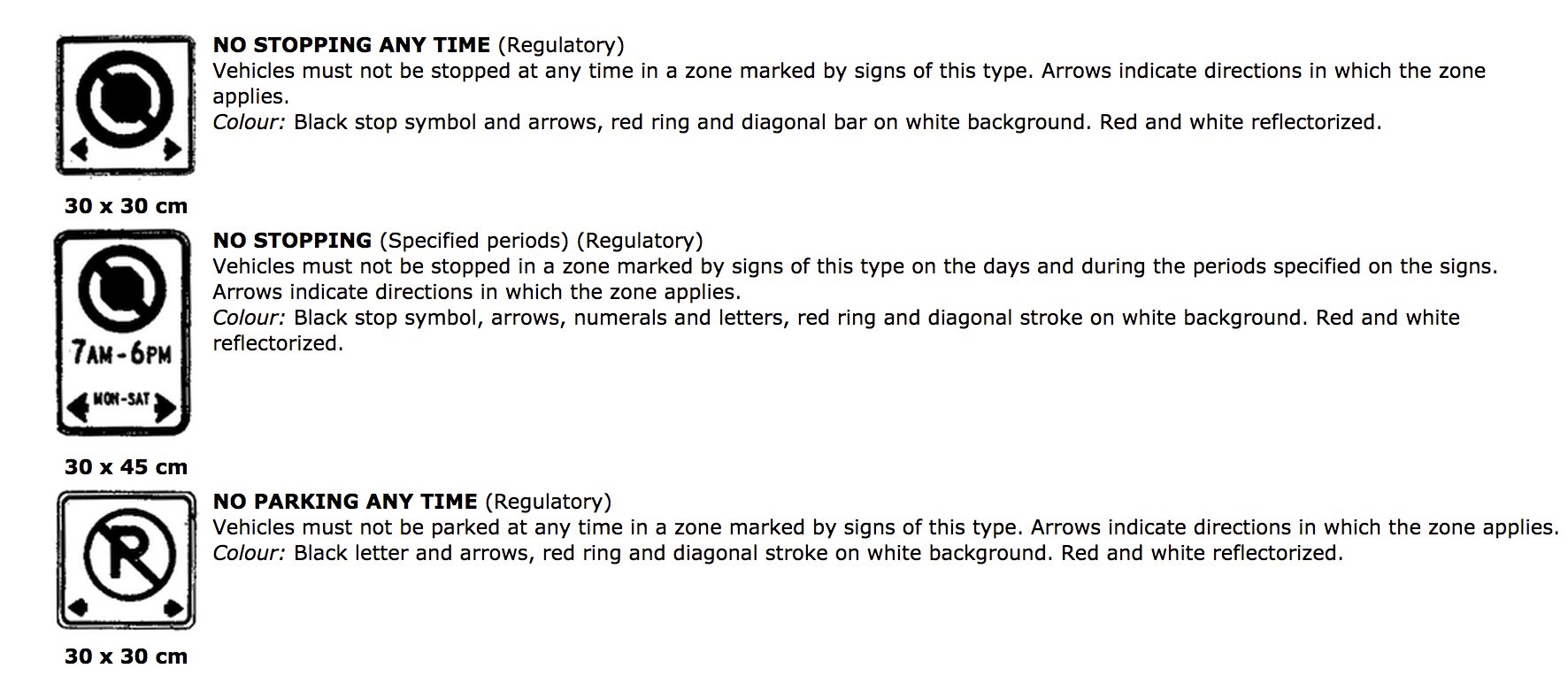
Difference between no stopping and no parking

Some examples…
This vehicle is not allowed to be parked to the right of the sign. The arrow is pointing to the right. But the law allows it to be stopped there (it doesn’t say not to stop).
A vehicle is allowed to be parked to the left of the sign between the hours mentioned. Outside of those hours, the vehicle can park there for as long as it wants. It can park there inclusive from 6:00 PM until 9 AM, or I guess it could be parked there from 4 PM until 11 AM, if you want to get technical.
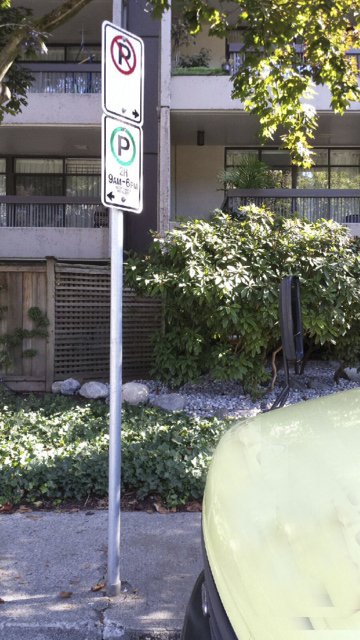
The same sign
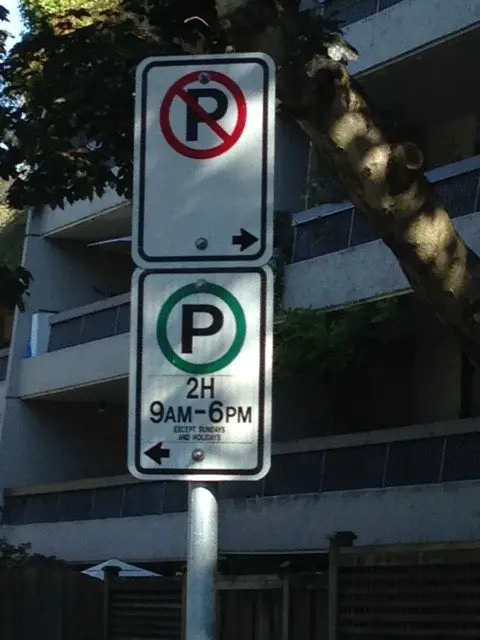
Here you can see (well maybe if you zoom in) the 2 no stopping signs. One on the corner of the intersection with the right arrow, and the other sign in the foreground with the left arrow.
So, there is no stopping between those 2 signs, between the sign in the foreground and the corner of the intersection basically.

No sign here, so, you can stop if you want
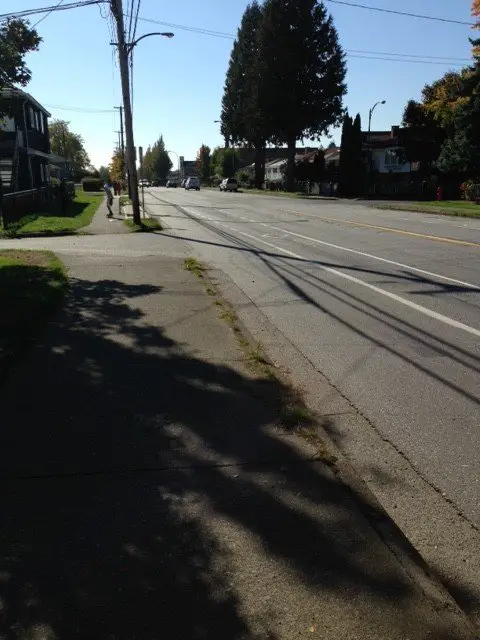
Do not stop to the left or right of this sign, continuing until the next sign
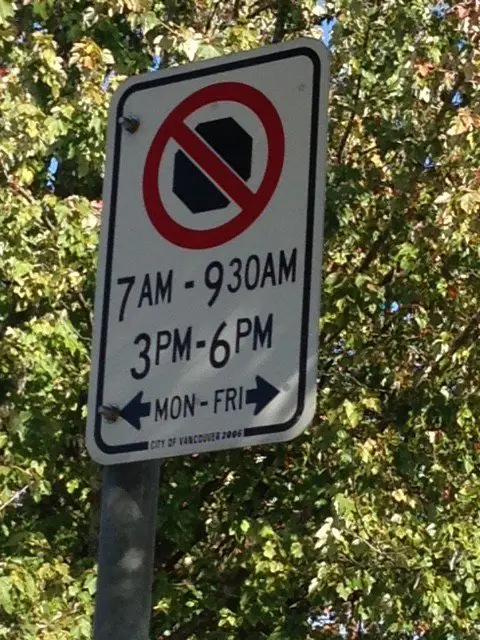
I went looking for some no-stopping signs in my free time, and I found it very easy to find them next to bus stops.
Usually, there is a good reason why we are not allowed to stop somewhere.
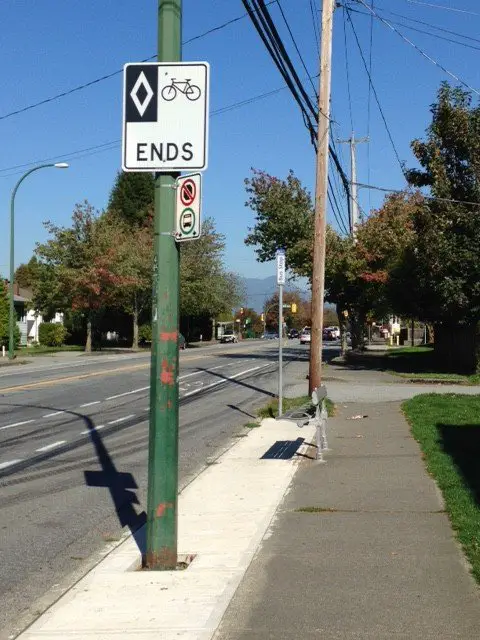
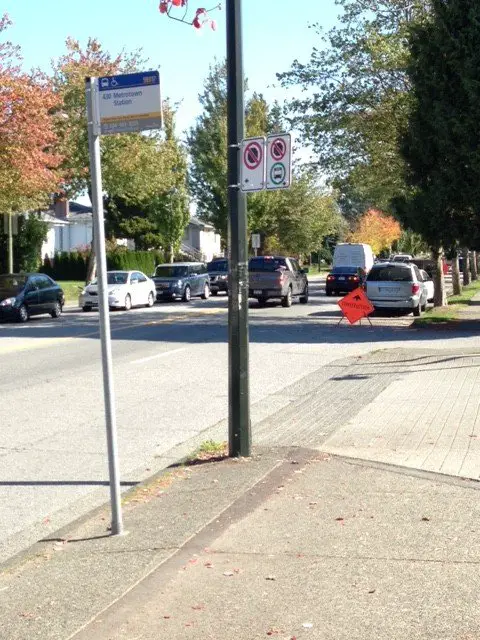
Nothing here telling you not to stop or park, therefore you can do it
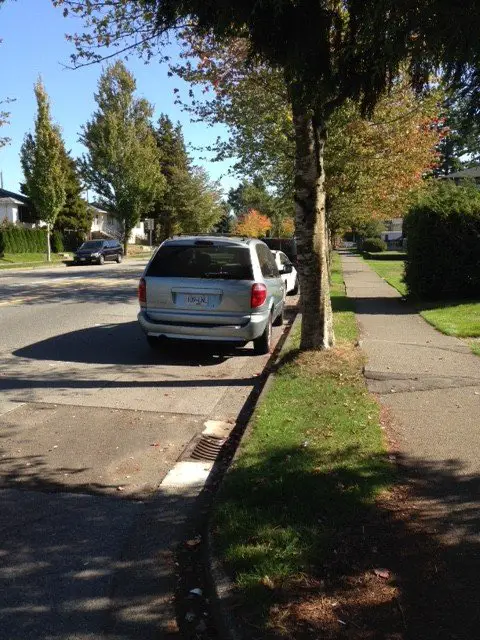
Other No Stopping Laws:
Motor Vehicle Act British Columbia
When vehicle stopping prohibited
189 (1) Except when necessary to avoid conflict with traffic or to comply with the law or the directions of a peace officer or traffic control device, a person must not stop, stand or park a vehicle as follows:
(a) on a sidewalk or boulevard;
(b) in front of a public or private driveway;
(c) in an intersection, except as permitted by a sign;
(d) within 5 m of a fire hydrant measured from a point in the curb or edge of the roadway that is closest to the fire hydrant;
(f) within 6 m of the approach side of a crosswalk;
(g) within 6 m on the approach to a flashing beacon, stop sign or traffic control signal located at the side of a roadway;
(h) within 6 m either side of the entrance to or exit from a hotel, theatre, public meeting place, dance hall, fire hall or playground in rural area;
(i) within 15 m of the nearest rail of a railway crossing;
(j) subject to subsection (4), on a highway for the principal purpose of
(i) displaying a vehicle for sale,
(ii) advertising, greasing, painting, wrecking, storing or repairing a vehicle, unless repairs are necessitated by an emergency,
(iv) selling flowers, fruit, vegetables, sea foods or other commodities or articles;
(k) alongside or opposite a street excavation or obstruction when stopping, standing or parking obstructs traffic;
(l) on the roadway side of a vehicle stopped or parked at the edge or curb of a roadway;
(m) on a bridge or other elevated structure on a highway, or in a highway tunnel, except as permitted by a traffic control device;
(n) in a place in contravention of a traffic control device that gives notice that stopping, standing or parking there is prohibited or restricted;
(o) in a manner that obstructs the visibility of a standard traffic sign erected by or with the authority of the minister responsible for the administration of the Transportation Act, a municipality or a treaty first nation.
(2) A person must not move a vehicle that is not lawfully under his or her control into a place mentioned in subsection (1).
(3) Despite subsection (1) (f) and (g), a municipality may provide by bylaw that, if authorized by a sign posted by the municipality, a person may park a cycle or motorcycle within 6 m of the approach side of a crosswalk or within 6 m on the approach to a flashing beacon, stop sign or traffic control signal if the cycle or motorcycle is
the cycle or motorcycle does not obstruct a motorist’s view of the crosswalk, flashing beacon, stop sign, traffic control signal or an intersection.
(3.1) If a municipality enacts a bylaw referred to in subsection (3), or a treaty first nation enacts a law having the same effect, a person may park a cycle or motorcycle in accordance with the bylaw or law.
(4) Subsection (1) (j) does not apply to a person acting under and in accordance with an authorization given under section 62 (2) or (6) of the Transportation Act.
Manner of parking
190 Except when a municipality, a treaty first nation or the minister responsible for the administration of the Transportation Actpermits, a driver must not stop, stand or park a vehicle on a roadway other than on the right side of the roadway and with the right hand wheels parallel to that side, and where there is a curb, within 30 cm of the curb.
Leaving parked vehicle
191 (1) A motor vehicle must be equipped with a lock or other device to prevent the unauthorized use of the motor vehicle.
(2) A driver must not permit a motor vehicle to stand unattended or parked unless the driver has
(a) locked it or made it secure in a manner that prevents its unauthorized use, and
(b) if the motor vehicle is standing on a grade, turned the front wheels of the vehicle to the curb or side of the highway.
Hope that kind of answers your question.
Thanks Laura :)
Read more on our blog:


